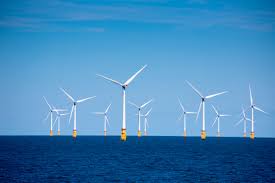A research study, recently published in One Earth, delves into the dynamics of electrification and hydrogen in the context of achieving climate neutrality in the European Union. The analysis emphasizes the significant potential of electrification and sheds light on the specific domains where hydrogen-based energy could be most effective. The findings point towards a more prominent role for electrification across various sectors compared to hydrogen, unveiling a key point of focus for the energy transition.
In the quest to transition towards renewable energy sources such as wind and solar power, the study emphasizes the crucial role of transforming the power system at a low cost and with minimal environmental impact. The research stresses the importance of leveraging renewable electricity to phase out fossil fuels in buildings, industry, and transportation sectors. The direct utilization of electricity, through means such as electric vehicles and heat pumps, emerges as a pivotal strategy across multiple sectors, while the conversion of electricity to hydrogen remains essential only for specific applications.
Using the REMIND energy-economy model, researchers from PIK explore the potential integration of electrification and hydrogen strategies within the EU’s energy system transformation pathways under various scenario assumptions. The analysis underscores that direct electrification stands as the primary strategy for passenger cars, low-temperature heating in buildings and industry, whereas hydrogen plays a crucial role in aviation, shipping, the chemical industry, and electricity storage.
The study highlights the complementary nature of electrification and hydrogen, as they cater to distinct sectors without substantial overlap. While electrification is projected to play a dominant role in reducing carbon emissions across most sectors, hydrogen and synthetic fuels are earmarked for specific niche applications. The transition towards electric technologies is highlighted as a cost-effective and efficient approach, as compared to the energy-intensive processes involved in hydrogen production and utilization.
Looking ahead to 2050, the research forecasts a significant surge in EU electricity demand, with an estimated increase ranging from 80% to 160%, contingent upon factors like hydrogen imports and the adoption of electrification and hydrogen in uncertain sectors. The study underscores the imperative for policymakers to align with the sector-specific roles of electrification and hydrogen, advocating for policies that prioritize each strategy where they exhibit maximum efficacy.
Key recommendations put forth by the researchers include prioritizing electrification and hydrogen deployment in their respective optimal sectors, addressing barriers to renewable energy expansion, and fostering the growth of hydrogen supply chains. By recognizing the unique roles of electrification and hydrogen in the energy landscape, policymakers can steer the transition towards a sustainable and efficient future energy system.
*Note:
1. Source: Coherent Market Insights, Public sources, Desk research
2. We have leveraged AI tools to mine information and compile it.




